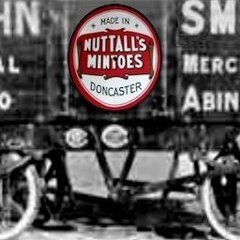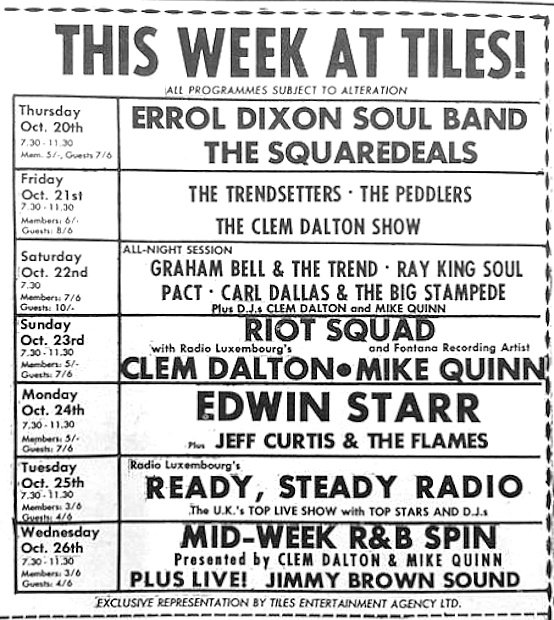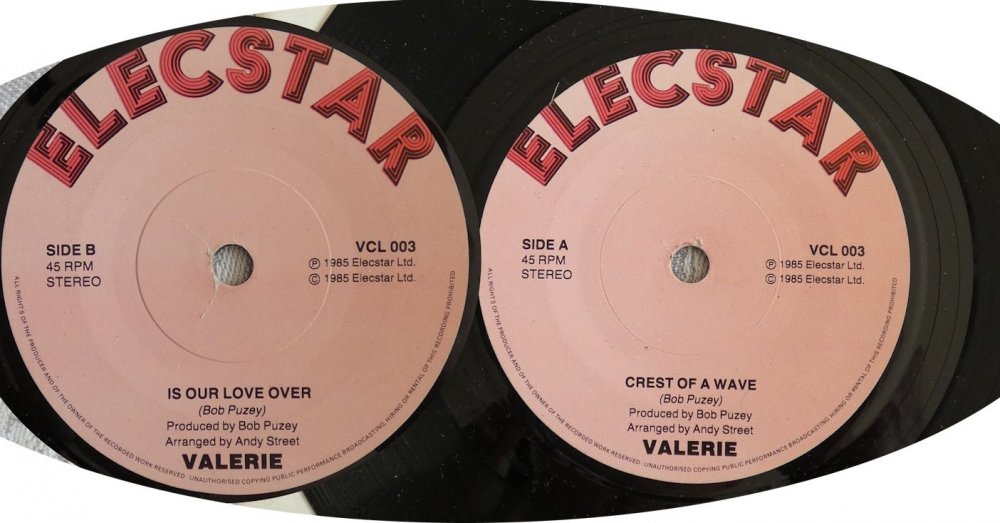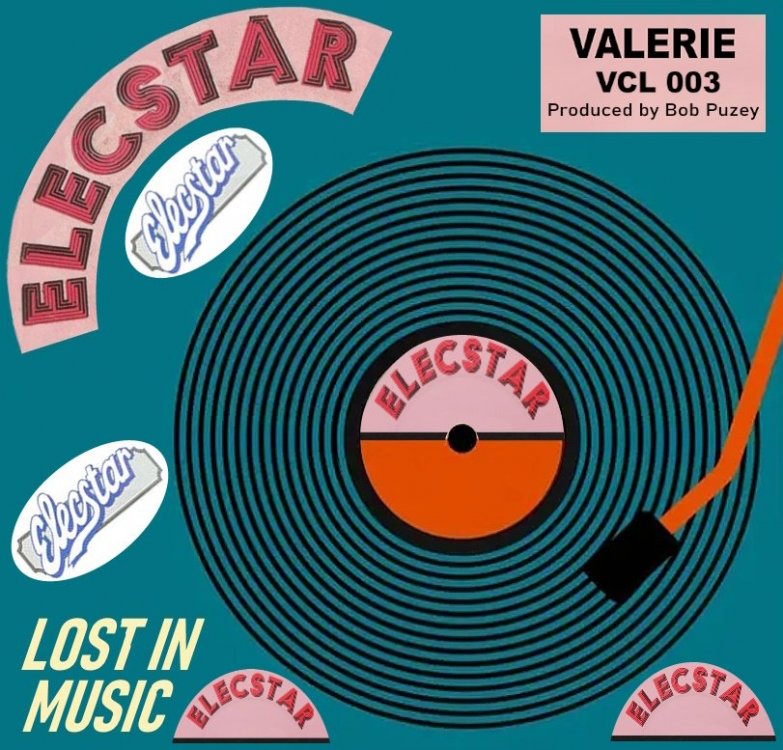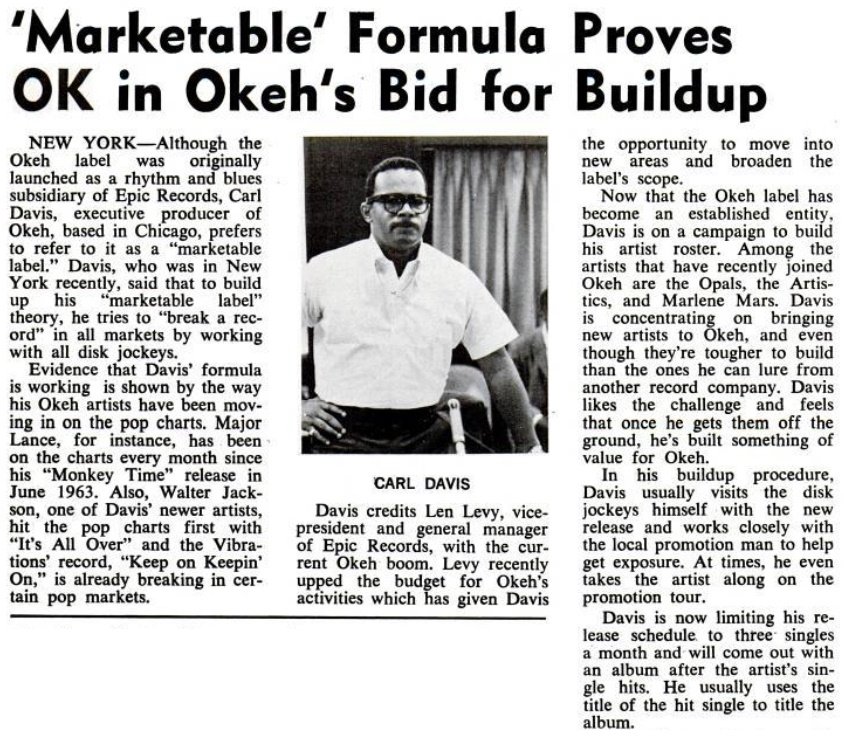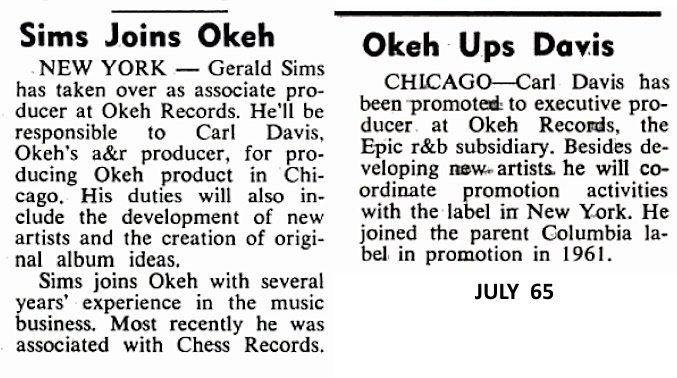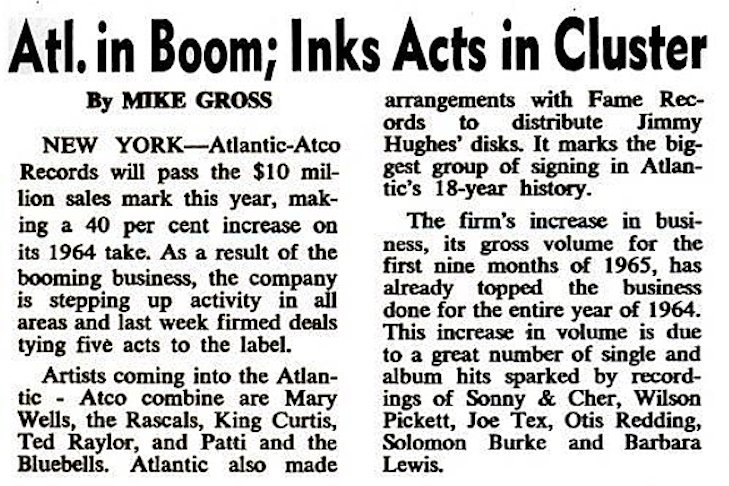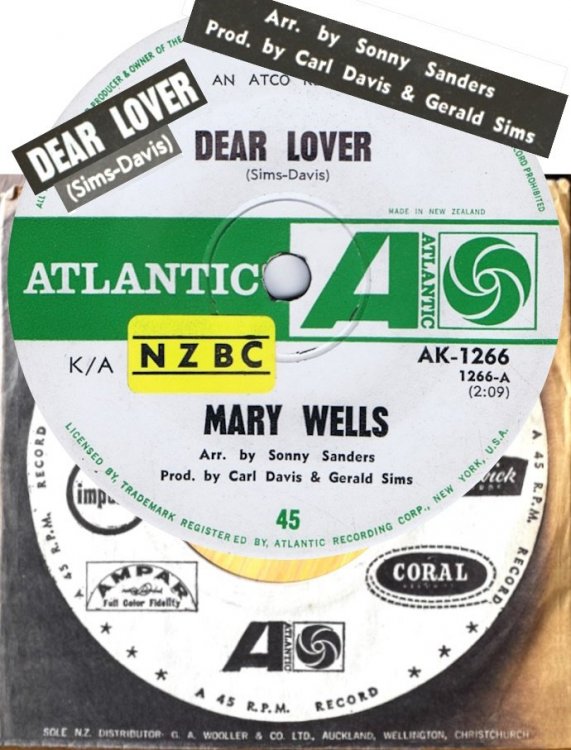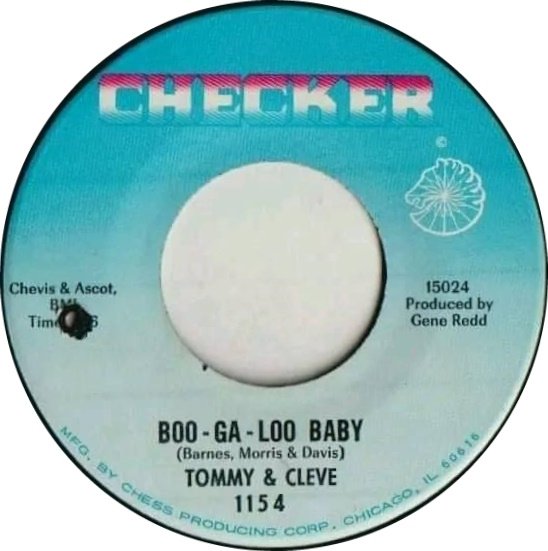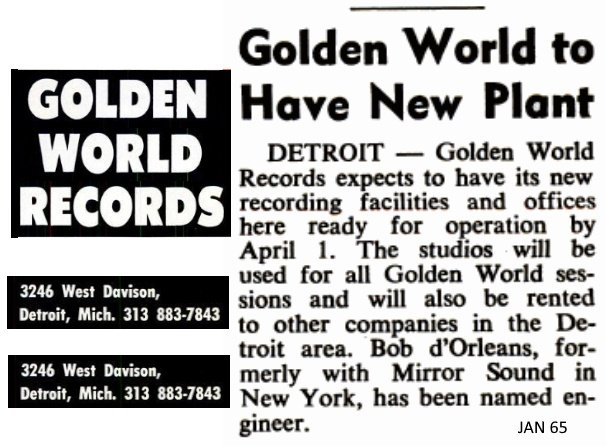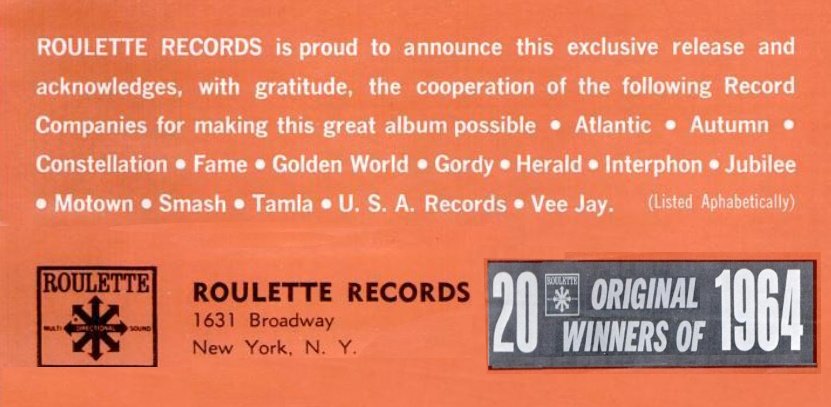Everything posted by Roburt
-
Golden World: Locals & Outsiders Involved
Though De-Lite put out their 1st 45 in October 1967, Gene Redd only seemed to get involved with them from August 69. That was when the 1st Kool & the Gang 45 came out on De-Lite. That 45 had made a very brief appearance on Gene's Red Coach label just before it's De-Lite appearance. 'His' 2nd 45 on De-Lite was the Appointments in October 69. As stated earlier, he was involved with the Platters LP (Musicor) in 1967. There were also Detroit related tracks on both the groups 1968 LP (Sweet Sweet Loving) and 1969 LP (I Get The Sweetest Feeling) + a Gene Redd part written song on the later. So I guess Gene Redd was involved with the Platters & Musicor into early 69 at least. Incidentally, Popcorn Wylie & Sonny Sanders oversaw the group's "Sweet Sweet Loving" track (& others).
-
The Eddie Holman 45 on our charts is 6 months old
In the US, a radio DJ would pick up an old 45, like what he was hearing & start to feature that cut on his show. Lots of times, his audience would react favourably and the single would start to sell again. This happened on numerous occasions & most have been well documented. OTHER TIMES, a locally distributed 45 would eventually find it's way into another area, a radio DJ there would play it (not realising it had been issued weeks / months ago ... AND AGAIN, the 45 would take off and start selling in that area. HOWEVER, it wasn't common (to my knowledge, for a release by a known artist on a well known nationally distributed label to take off and still be selling 6 months after it had been first released. Some 45's would catch on slowly, becoming popular in one city at first. DJ's in other areas would see it listed as doing well (in say Baltimore) & they'd start playing it. It's popularity would then slowly spread with the last area in which it became popular being some time after it had first took off in the first city. BUT Eddie Holman's Parkway 45 release (THIS CAN'T BE TRUE) from September 1965 was still charting in Baltimore & Boston over 6 months after it had first hit record shop shelves. I can believe it may have taken time to reach & become popular in Boston BUT Baltimore is only just down the road from Philly (just 100 miles away). The chart's below are from the end of March 1966 . . . at the time it was still in the top 30 national R&B chart & at #66 on the Hot 100 pop chart. ALSO, I have been told that Eddie was out doing live shows (in places such as Pittsburgh -- 300 miles from Philly) to promote the 45 in summer 1966. Eddie's follow up 45 (which included "Eddie's My Name" on the B side) had been released in April 66, so I guess he should really have been promoting "Don't Stop Now" at the time. Cameo were placing ads in the US music press to promote DSN in early May 66. It was also on the LA chart & bubbling under the Hot 100 at the same time. Anyone know why / how this would have happened ?
-
Golden World: Locals & Outsiders Involved
ALSO Gene Redd had been appointed an A&R guy by Musicor & put in charge of the 'Platters update' project -- the initial 45 from that was released in February 67 & the album ('Going Back To Detroit') in August 67. Gene still seemed to be involved with GW in 1966 & he must have started work with Musicor in New York before the end of that year. So his sacking / leaving must have been sometime around late summer / fall 1966. By 1966 Edwin Starr was just about GW / Ric Tic's top act. He'd been enjoying hit 45's since July 65. So he was in demand for big US package tours. In April 66, Edwin Starr was touring with the Miracles, Contours & Velvelettes. In June66, hen was touring on a package with new Motown act Gladys Knight & Pips. Edwin undertook a UK tour in October 66. It's said that when he left the US, he was a Ric Tic act but when he returned from his UK tour, he was a Motown act. That tour was organised by Roy Tempest and ran from the 14th to 29th October -- so the sale of GW acts contracts to BG / Motown must have been around that time. That would seem to tie in with when Gene Redd 'left' GW.
-
UK Elecstar Records
-
Golden World: Locals & Outsiders Involved
Thanks for the reply; very informative as always.
-
UK Elecstar Records
ELECSTAR -- This label was active in the 1980's and put out a confusing mix of stuff by different types of people (singers, comedians, studio based outfits). One of the labels main 'employees' seemed to be song writer (& producer) Bob Puzey, along with the likes of John Velasco, Derek Livesey, Phil Da Costa, John Allen, etc. Puzey was responsible for the VALERIE songs & recording session. He worked before & after his time on Elecstar stuff with an even greater mix of people -- pop groups (Nolans, Dooleys, Fortunes, Dana), footballers, Japanese artists, disco acts (Shy Flack), comedians (Russ Abbott), pop soulsters (Haywoode, Billy Ocean, Sharon Benson) and more. So he seemed to work with anyone who'd hire him. ANYWAY, back to ELECSTAR. They had Danny Williams signed to them but in general, never put out anything more that would interest us here. . . . HOWEVER, a 45 that isn't listed on DISCOGS is worth a listen ... VALERIE -- Crest Of A Wave / Is Our Love Over VCL 003. . . . 1985 The label operated between 1983 & 1988, so the Valerie 45 wasn't one of the 1st things they'd released. Other stuff they were involved with was cut @ Jacobs Studio, Surrey -- Jacobs Studios Ltd, Ridgeway House, Runwick Lane, Farnham, Surrey . . . BUT I have no idea if the VALERIE tracks were also cut there. Anyone know anything about VALERIE (full name, etc. and if she had anything else out at all . . . or this label ? .
-
Golden World: Locals & Outsiders Involved
Robb, many thanks for your answer. As I said in my first post, I'm in touch with an 'outside singer' who was sent to Golden World by a contact back in his home city. That contact then broke off his relationship with GW, so by the time 'my guy' got there, using his 'contacts' name was no longer a help to him. But luckily, he (& his group) had a demo tape with them. Gene Redd bumped into them & intrigued, took them into an office in the building to listen to their tape. He liked what he heard, so took them to meet Ed Wingate. He also liked their stuff (2 self written sings) & arranged for them to have time in the studio. They cut 4 songs & Gene Redd held onto the master tape. He then told 'my guys' that he'd shop their tracks to labels in New York and left, saying he'd be in touch in about a month. Seems Gene Redd (or more likely Ed Wingate) paid the hotel & food bills for the guys while they waited to get into the GW studio; they also never paid for their studio time or the musical / backing singers work ... so I guess the results of their studio session would have been 'owned' by Ed Wingate). ANYWAY, after the session was over & they returned home, things got complicated & a deal via Golden World or a New York label for the 'GW tape' never materialised. What happened to it, 'my guy' has no idea (they weren't given a copy either). ANOTHER QUICK QUESTION ... I guess Wingate always thought he'd hire out time in his new studio & that would bring in fees that would help pay for the facility. He had to sell out to BG, so I have to assume the amount he made from GW / Ric Tic releases & the money he made from outside session fees never met his original expectations. To your knowledge, is that so .... I.E. that the 'outside work' the studio got & therefore the fees from hiring out GW studio time wasn't actually as much as Wingate had originally expected ? SORRY to be so cryptic in part BUT my article that deals with all these matters isn't finished yet (but will be published in the very near future).
-
Golden World: Locals & Outsiders Involved
I believe the BOY MEETS GIRL project was Stax's way of trying to find male / female duet partnerships ala Otis & Carla, William Bell & Judy Clay ... the tracks were cut at different times (as artists became available) & in different studios. Think backing tracks were mainly done in Detroit, vocal tracks darn souf. I bought the UK single LP when it was issued & didn't realise the US version was a double LP till much later (no tintanet, etc.). Lots of Detroit / Memphis / New York / Chicago stuff from that period (mid 60's to early 70's) is a confusing mix. FOR INSTANCE, Sonny Sanders quit Detroit in November 65 ... BUT ... his name is on the Detroit cut Bobby Williams Sure-Shot 45's from Oct 66 & Feb 67. In similar fashion, Gene Redd's name is on the Atco Darrell Bank's 45's issued in March & May 67. After Gene R left Detroit, he was appointed as an A & R guy @ Musicor. He was put on the project to update the Platters sound. No doubt he had a big hand in getting the 'old' backing tracks from Detroit that formed the base of the cuts on the spring 67 album 'GOING BACK TO DETROIT'.
-
Your Top Fives Songs From - The Manhattans
I'm a sucker for that Impressions sound ... so I'd have to go with "That New Girl" too. Though lots of their 70's tracks were top notch too.
-
Golden World: Locals & Outsiders Involved
So it seems we've identified why Carl Davis left Okeh and how he came to be at Brunswick, poaching talent from all around Chicago & Detroit to join him in making 'new hits'. We just have to sort out similar details / reasons for Gene Redd quitting his time with Golden World and his re-emergence on the funky foot @ De Lite. Seems none-Motown Detroit recordings had some success after GW was taken over & left the scene, but it never seemed to be on the same scale as it was around 1965/66. Don Davis was still a main player but he was soon recruited by Stax and split his time between Detroit & Memphis (for finished recordings). Ed Wolfrum @ United Sound Studio, Detroit & Russ Terrana, Jr. @ Terra Shirma Studio, Detroit were both hired to work on Stax's 1969 released 'BOY MEETS GIRL' project. Dale Warren, Johnnie Allen, Rudy Robinson & Pat Lewis also worked on tracks cut for the project. Don Davis overseeing some of the tracks too. After Motown moved to LA & Don Davis hooked up with Stax, a lot less great tracks on Detroit indie labels appeared. Westbound eventually took on a major roll in the city but again, they had left the 60's Detroit sound behind too.
-
Golden World: Locals & Outsiders Involved
Carl Davis came to Brunswick from Okeh & as soon as he got there he hired a talented team to help him (Sonny Sanders, Gerald Sims, etc). BUT I don't think it's ever been fully explained why he left Okeh so suddenly. Pieces from the US music press through 1965 paint a picture of both sides (Okeh / Epic & Davis) being happy & Davis hiring staffers and getting promotions ... something obviously happened in the August / September 65 period to sour the relationship and prompt Davis to jump ship to Brunswick. He probably had a falling out with the Epic execs in New York, but why / over what is probably lost in the mists of time. The Mary Wells track he worked on ("Dear Lover") returned her to the US charts and was reviewed by Cashbox the same week as the ladies who seemed to take her place @ Motown also had their new 45 reviewed.
-
Golden World: Locals & Outsiders Involved
Robert Pruter in 'CHICAGO SOUL' writes ... by the time "Dear Lover" was released in February 66 ... Davis credited as producer ... the song was written by Carl Davis and Gerald Sims & arranged by Sonny Sanders, who had recently been brought to Chicago from Detroit. Seems he got the release date for "Dear Lover" wrong. It came out at the end of December 65 and was reviewed in the US music press that was published in mid January 66. Mary had signed with Atco around October 65 & I guess it made sense for the label to team her with an ex Detroit guy. So it seems likely that the track was cut in late November / early December 65 and rush released. So it seems Sonny Sanders was working with Carl Davis in Chicago as early as December 65.
-
The best soul album
A few 70's Lamont Dozier LP's were works of genius. Ashford & Simpson's 'Send It' is pretty special as well.
-
Golden World: Locals & Outsiders Involved
Three of my all time faves (from back in the mid 60's) are Marvin Smith "Have More Time" & the Artistics "I'm Gonna Miss You / Hope We Have" ... Sonny Sanders worked on them all .... talented or what.
-
Golden World: Locals & Outsiders Involved
As I said above, lots of the backing tracks on cuts from the LP were re-cycled from earlier Detroit studio sessions .... BUT I think the backing on "With This Ring" was newly created & not recycled (could be wrong though). Guess with Chicago acts / sessions using Detroit musicians & going for the Detroit Sound, Luther Dixon decided to do the same to 'update' the Platters sound. It certainly worked, whoever's idea it was. "Washed Ashore" was a Wylie / Hester / Sanders effort too. The Platters cut in New York but guess the backing track had been cut in Detroit once again. Jumping back to Tony & Tyrone, their "Please Operator" seems to have gained a LATE release (Nov 67) for the people involved. If it was actually cut in Detroit, I'd say it had 'sat around' for a while before Atlantic picked it up.
-
Golden World: Locals & Outsiders Involved
When you check the 45 version of "With This Ring" it gives the writers as Popcorn + Tony Hester + Luther Dixon, with Luther also producing. Of course, the track was included on their 'Going Back To Detroit' LP which featured recycled old Detroit recorded backing tracks. I was told that Gene Redd was also involved with the Platters on "With This Ring". Neither Sonny Sanders of Gene Redd seem to ever get an acknowledgement as having worked with the Platters on the recording. I interviewed Sonny Turner years ago (lead singer with the Platters in 60's) but I didn't think to ask him about the making of "With This Ring" and who was involved. Does anything relevant get a mention in the booklet to Kent's CD .. The Platters Musicor Years ? . . I have the CD somewhere but no idea where.
-
Golden World: Locals & Outsiders Involved
Gene Redd in charge on this, with lots of other Detroiters involved too ... would this have been cut @ GW ? ...
-
The best soul album
FORGOT JUST ABOUT THE BEST TWO MOTOWN LP'S .... 'What's Going On' ... not a duff track .. AND 60's soul supreme >>> The Isley Brothers – This Old Heart Of Mine
-
The best soul album
As already mentioned, the Sam Dees, Doris Duke & Sandra Wright LP's + 'New Religion' take some beating. I used 'New Religion' as a learning tool back in 66 ... trying to track down copies of the original versions of each track on the album. The Impressions also put out numerous great albums, as did their old leader Curtis after he went solo. James Carr's 'You Got My Mind Messed Up' and the first two Sam & Dave Stax albums from 1966 are great too. As a spin off thread, it'd also be great to learn what Sourcer's fave live albums were.
-
Golden World: Locals & Outsiders Involved
Thanks for the input. Is it known if Sonny fell out with the GW management or did he just get a better offer to go to Chicago. Obviously at that time (late 65 / early 66). lots of Chicago artists were going with a 'Detroit sound', so it only seems sensible that they'd recruit guys who knew how things were done in the Motor city. And it wasn't just Brunswick acts that were going 'Detroit', Fontella Bass over @ Chess went with the sound too from late summer 65. Anyone got the full SP of Gene Redd's transition from GW to De-Lite ? ANOTHER QUESTION: did the Brit soul guys who spent time in Detroit, tracking down the 60's music biz folk there, manage to establish who the producers / arrangers on lots of GW tracks were ? Obviously the likes of Sonny Sanders, Gene Redd and others would have been utilised on such duties when working @ GW. Paying for all GW's facilities obviously left the company short on cash. I wonder if the volume of 'outside work' that they had been expecting through 1965 didn't actually materialise. Has a full listing of 'outside tracks' cut @ Golden World been compiled ? ALSO, guess BG would not have been too impressed seeing ads such as the one placed by Roulette in 65...
-
Bobby Womack and Friends; whose soothing your bones today
Anuda duet ... a cover but who cares ..
-
The Impressions Albums
2 of the first LP's I ever bought ... BIG SIXTEEN BIG SIXTEEN Vol.2
-
SPIN OFF THREAD: Australian Singles Charts
Done more digging & this came up on 45cat ... Local (Aussie) charts were supposedly based on local sales but in practice were published by the radio stations themselves and of course reflected their own playlists. So it seems Edwin's "WAR" was not played on radio stations in Adelaide, Brisbane, Hobart, Perth & Sydney BUT it was played on the radio in Melbourne. Australia sent lots of troops to fight in Viet Nam, so I guess the commercial radio stns there would think it unpatriotic to play an anti-Vietnam war song. But his 45 did chart nationally, so copies of it were obviously selling ... even in cities where the radio stns wouldn't play it.
-
EMI Australia Info request
More relevant bits from posts on 45cat ... The reason Motown, or Stax, or Atlantic, or Chess etc never caught on in Australia in the early to mid '60s was commercial radio stations were very very selective in what they played. They restricted their playlists generally to safe pop hits from America and the U.K. and usually steered clear of any records that sounded remotely "black". thus the Marvelettes 45's wouldn't get played on Aussie radio ... certainly no R&B or soul records on Atlantic or Chess were played. White Aussie cover versions of American hits by black artists of course got airplay but many fine records by black artists were never played, and therefore never heard and never bought. Local charts were supposedly based on local sales but in practice were published by the radio stations themselves and of course reflected their own playlists. In those days people generally only bought what they'd actually heard on the radio anyway, and what they heard was just a small percentage of what was released here. why press and release them unless someone was buying them... I always thought, here in Australia, that it was a "throw 'em against the wall and see what sticks" policy. In other words, wait and see which particular records would get played by the radio stations and by definition they would be the potential "hits". Meanwhile, as in the case of this particular Marvelettes record, the record companies would be cautious, pressing maybe a hundred copies with promo stickers, and if there was no reaction from radio there was no follow-up pressing run and the record would be deleted within a very short time. The reps would come around with samples, I would order what I thought was a goer, the rest, if requested, I would get in via the release sheets. EMI and a couple of other companies had a half yearly 5% returns allowance, I guess, in part, to encourage the shop to take a punt on lesser known releases. These would be classed as deleted stock.
-
EMI Australia Info request
The piece below (from 1965) makes mention of the music publishing company pushing the record label in Australia to release 45's featuring their music. A similar mention was made regarding the Marvelettes "Please Mr Postman" above ... SEEMS that music publishing companies were more influential in getting records released in Australia than elsewhere. Almost as influential as the actual record companies (such as EMI) were themselves. Don't think they had as much say in the UK or US.

